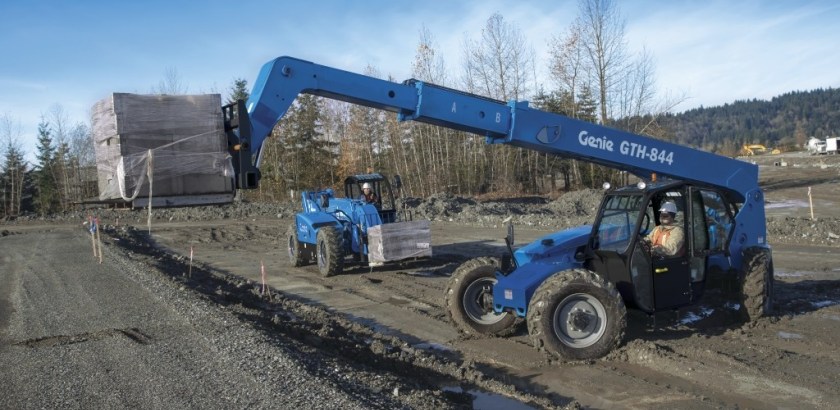MEWP and Telehandler Operation – What Operators Must Do Before Every Shift
by Scott Owyen - Director of Training On Jun 20, 2019, 03:00 AM
Subscribe To Aerial Pros
Filter by tags
There are five concepts of safe machine operation, all of which are outlined in the machine’s operator’s manual, for Genie® aerial equipment, including mobile elevating work platforms (MEWPS, formerly AWPs) and telehandlers.
The concepts are:
- Avoid hazardous situations
- Always perform a pre-operation inspection on the equipment
- Perform function tests prior to use
- Inspect the workplace
- Only use the machine as it was intended
Genie operator’s manuals are organized around these principles. These principles, if followed in sequence, help the operator operate the machine safely and efficiently.
Avoid Hazardous Situations
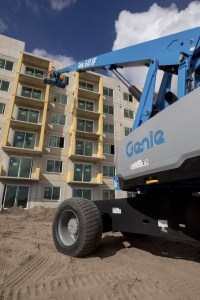 Before any operation begins, make sure that all equipment operators have received proper training (both general training and hands-on practical training), as well as familiarization on the specific model that operators will be using. Thoroughly read the operator’s manual and safety signs on the machine to identify the hazards associated with the operation of the machine, as well as how to avoid those hazards, understand the function and location of all safety devices and controls and identify the operating characteristics specific to that machine before beginning operation.
Before any operation begins, make sure that all equipment operators have received proper training (both general training and hands-on practical training), as well as familiarization on the specific model that operators will be using. Thoroughly read the operator’s manual and safety signs on the machine to identify the hazards associated with the operation of the machine, as well as how to avoid those hazards, understand the function and location of all safety devices and controls and identify the operating characteristics specific to that machine before beginning operation.
Do a Pre-Operation Inspection
The next step is to perform the pre-operation inspection. The pre-operation inspection is a visual inspection performed by the operator prior to each work shift. The inspection is designed to discover if anything is apparently wrong with a machine before the operator performs the function tests.
The pre-operation inspection also serves to determine if routine maintenance procedures are required. Only routine maintenance items specified in this manual may be performed by the operator.
- Be sure that the operator’s, safety and responsibilities manuals are complete, legible and in the storage container located in the platform.
- Be sure that all decals are legible and in place.
- Check for engine oil leaks and proper oil level. Add oil if needed.
- Check for hydraulic oil leaks and proper oil level. Add oil if needed.
- Check for engine coolant leaks and proper level of coolant. Add coolant if needed.
- Check for battery fluid leaks and proper fluid level. Add distilled water if needed.
- Check for proper tire pressure. Add air if needed.
- Check the following components or areas for damage, improperly installed or missing parts and unauthorized modifications:
- Electrical components, wiring and electrical cables
- Hydraulic hoses, fittings, cylinders and manifolds
- Fuel and hydraulic tanks
- Drive and turntable motors and drive hubs
- Boom wear pads
- Tires and wheels
- Engine and related components
- Limit switches and horn
- Alarms and beacons (if equipped)
- Nuts, bolts and other fasteners
- Platform entry mid-rail or gate
Check the entire machine for:
- Cracks in welds or structural components
- Dents or damage to machine
- Excessive rust, corrosion or oxidation
Be sure that all structural and other critical components are present and all associated fasteners and pins are in place and properly tightened.
After completing the inspection, operators should be sure that all compartment covers are in place and latched.
Perform All Function Tests
The third step is to perform function tests prior to use. Function tests are designed to discover any malfunctions before the machine is put into service. The operator must follow the step-by-step instructions to test all machine functions.
A malfunctioning machine must never be used. If malfunctions are discovered, the machine must be tagged and removed from service. Repairs to the machine may only be made by a qualified service technician, according to the manufacturer's specifications.
First, select a test area that is firm, level and free of obstruction.
If performing the tests on a telehandler, enter the cab with a three-point entry using the steps and handrails provided. Adjust the seat and fasten the seatbelt. Test every device and telehandler function through the full range of motion. Test the parking and service brakes, steering modes, horn, backup alarm, drive, and any other features with which the machine may be equipped.
If performing the tests on a MEWP, always begin at the ground controls. Test every device and machine function through the full range of motion (except for the auxiliary controls, if equipped, which should be operated only through a partial cycle to conserve battery power).
If all ground controls operate properly, move to the platform controls.
If testing a self-propelled or trailer-mounted boom, always wear the appropriate personal fall protection equipment. Never operate a boom without the proper full-body harness and appropriate lanyard. Test all devices and platform controls through the full range of motion (except for the auxiliary controls, if equipped, which should be operated only through a partial cycle to conserve battery power).
Inspect the Workplace
If the machine checks out, move on to the workplace inspection, our fourth key concept for safe machine operation. The workplace inspection helps the operator determine if the workplace is suitable to operate the aerial platform safely. It should be performed by the operator prior to moving the aerial platform to the work place.
Be aware of and avoid the following hazardous situations:
- Drop-offs or holes
- Bumps, floor obstructions or debris
- Sloped surfaces
- Unstable or slippery surfaces
- Overhead obstructions and high voltage conductors
- Hazardous locations
- Inadequate surface support to withstand all load forces imposed by the machine
- Wind and weather conditions
- The presence of unauthorized personnel
- All other possible unsafe conditions
Use Only as Intended
The fifth key concept is to only use the machine as it was intended. The operating instructions section in the machine’s operator's manual provides instructions for each aspect of machine operation. It is the operator's responsibility to follow all the safety rules and instructions in the operator's, safety and responsibilities manuals.
Remember, if more than one operator is expected to use the machine in the same work shift, each operator must be qualified and follow all safety rules and instructions in the operator's, safety and responsibilities manuals. That means every new operator should perform a pre-operation inspection, function tests and a workplace inspection before using the machine.
This content outlined in this article is for informational purposes only; it does not replace information covered in a machine’s operator’s or service manual, nor does it constitute training.
Related Posts
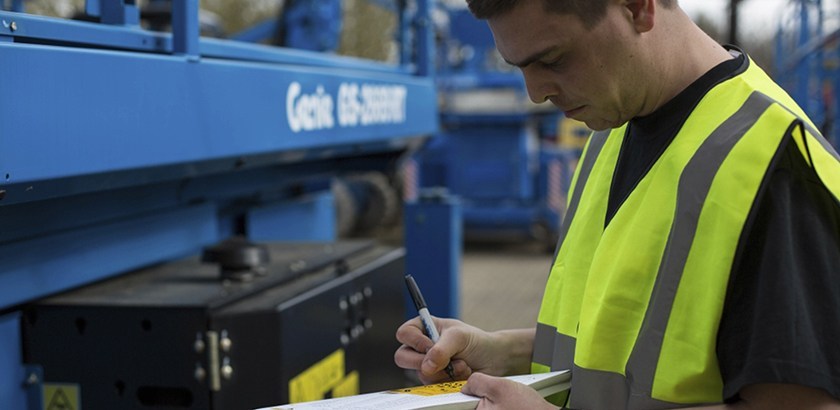
MEWP Safe Use Plan Guidance
The operation of any Mobile Elevating Work Platform (MEWP) is subject to certain hazards that can be protected against only by the exercise of intelligence, care and common sense, and not by any device.
Continue Reading
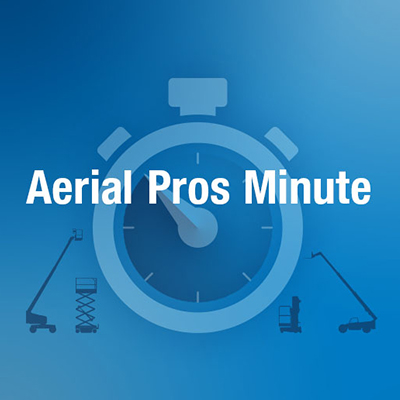
Aerial Pros Minute: Telehandler Carriage Options
Learn more about telehandler carriage options in this month’s Aerial Pros Minute.
Continue Reading
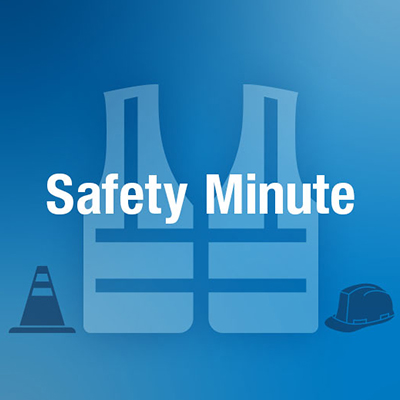
Genie Safety Minute: Global Standards Requirements for MEWPs
Genie Safety Minute is intended to facilitate health and safety discussions on the job site.
Continue Reading


